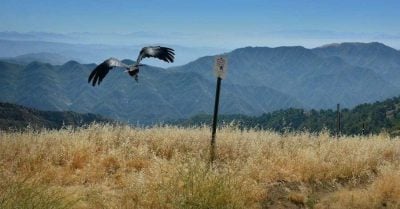Trump Finalizes Disastrous Weakening of Endangered Species Act
Rollback Threatens Wildlife Across Country, Will Face Legal Challenge

In a massive attack on imperiled wildlife, the Trump administration today finalized rollbacks to regulations implementing key provisions of the Endangered Species Act. The changes, which could lead to extinction for hundreds of animals and plants, are illegal and will be challenged in court.
The three rules finalized today were developed under the supervision of David Bernhardt, the secretary of the U.S. Department of the Interior and a former fossil fuel industry lobbyist. They severely weaken protections for threatened and endangered species across the country.
“These changes crash a bulldozer through the Endangered Species Act’s lifesaving protections for America’s most vulnerable wildlife,” said Noah Greenwald, the Center for Biological Diversity’s endangered species director. “For animals like wolverines and monarch butterflies, this could be the beginning of the end. We’ll fight the Trump administration in court to block this rewrite, which only serves the oil industry and other polluters who see endangered species as pesky inconveniences.”
One set of regulatory changes weaken the consultation process designed to prevent harm to endangered animals and their habitats from federal agency activities. A second set curtails the designation of critical habitat and weakens the listing process for imperiled species. A third regulation would eliminate all protections for wildlife newly designated as “threatened” under the Act.
The changes are part of a broader effort by the Trump administration to undercut protections for the nation’s air, land, wildlife and water.
“These regulations are totally out of touch with the American public, which broadly supports endangered species protections,” Greenwald said. “We’ll do everything in our power to get these dangerous regulations rescinded, including going to court.”
Under a change relating to federal consultations, impacts to critical habitat will be ignored unless they impact the entirety of an animal’s habitat. This disregards the cumulative “death-by-a-thousand-cuts” process that is the most common way wildlife declines toward extinction.
The new rules will also prohibit designation of critical habitat for species threatened by climate change, even though, in many cases, these species are also threatened by habitat destruction and other factors. The rollbacks will also preclude designation of critical habitat for areas where species need to move to avoid climate impacts.
The new rules will sharply limit wildlife agencies’ ability to designate critical habitat in unoccupied areas needed for recovery. That ignores the fact that many threatened and endangered species have lost substantial range and need their historic habitats preserved to provide living space for recovering populations.
*
Note to readers: please click the share buttons above or below. Forward this article to your email lists. Crosspost on your blog site, internet forums. etc.

